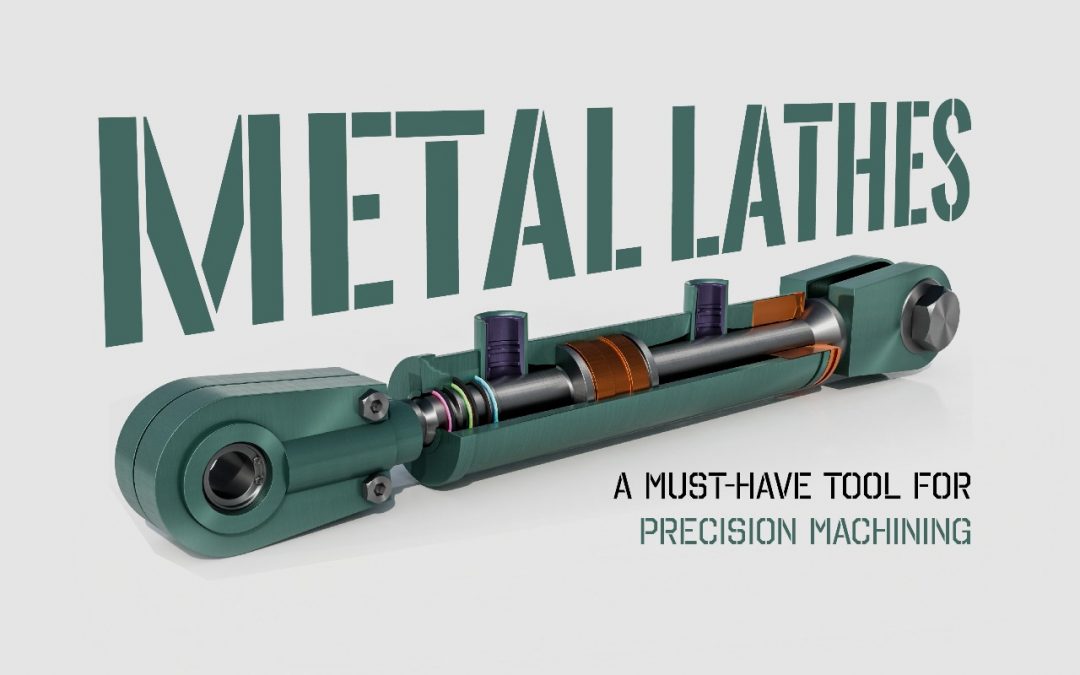Imagine having the power to shape metal with extreme precision right at your fingertips. That’s exactly what a metal lathe offers. A metal lathe is an essential tool for anyone serious about precision machining. Its ability to cut, sand, drill, and twist metals into perfect shapes makes it indispensable in many workshops.
You’ve likely marveled at intricate metal parts and wondered how they were made. The secret lies in the use of a metal lathe. This tool allows you to create complex designs with accuracy and consistency that would be nearly impossible by hand.
Using a metal lathe not only enhances your craftsmanship but also speeds up your workflow. Whether you’re a hobbyist or a professional, incorporating a metal lathe into your projects can elevate the quality of your work, allowing you to tackle more advanced and intricate tasks with confidence.
Understanding Metal Lathes
Metal lathes have evolved through history, varying in types and functions. To operate one effectively, it’s crucial to understand their components, power sources, and the different models available.
History and Development Metal Lathes
Metal lathes date back to Ancient Egypt, where the earliest versions were simple and manually operated. The Industrial Revolution brought significant changes with mechanized and more precise designs. In the 19th century, advancements in materials and machining techniques allowed for increased accuracy and efficiency.
High-speed steel and carbide tools further improved precision and durability. Today’s computer numerical control (CNC) lathes epitomize this evolution, offering unmatched precision and automation capabilities.
Types of Metal Lathes
There are several types of metal lathes, each designed for specific tasks:
- Engine Lathes: Versatile and commonly used for various machining tasks.
- Turret Lathes: Ideal for producing multiple identical parts with efficiency.
- CNC Lathes: Computer-controlled for high precision and complex operations.
- Bench Lathes: Smaller, suitable for detailed and delicate work.
Choosing the right type depends on your project needs, desired precision, and available workspace.
Components and Functionality Metal Lathes
Metal lathes typically include the following components:
- Bed: The base that supports the machine.
- Headstock: Mounted on the bed, contains the motor and controls.
- Tailstock: Opposite the headstock, used to support the workpiece.
- Carriage: Moves along the bed, holding the cutting tool.
- Lead Screw: Enables precise movement of the carriage.
Each component works in harmony to ensure the workpiece is accurately shaped and machined.
Size and Power Considerations Metal Lathes
Metal lathes come in various sizes, from compact benchtop models to large industrial machines.
Size: Bench lathes are great for smaller projects and limited space. Larger lathes are suited for bigger projects, offering more power and versatility.
Power: Measured in horsepower (HP), more powerful lathes handle tougher materials and larger workpieces. Power requirements will depend on the materials you work with and the scale of your projects.
Operating a Metal Lathe
Operating a metal lathe involves prioritizing safety, mastering basic operations, exploring advanced machining techniques, and maintaining the equipment to ensure longevity and performance.
Safety First: Best Practices
Always wear protective gear such as safety goggles, gloves, and ear protection. Avoid loose clothing and long hair that could get caught in the machinery.
Make sure the workspace is tidy and clear of any obstructions. Familiarize yourself with the lathe’s emergency stop function. Check that all tools and materials are securely fastened before starting. Regularly inspect the lathe for any signs of wear or damage to prevent accidents.
Basic Metal Lathe Operations
Start by learning how to set up your workpiece correctly. Secure it in the lathe chuck and ensure it is centered. Familiarize yourself with the lathe’s controls, including the speed settings and feed rate.
Practice basic cuts such as facing, turning, and parting. Use sharp tools and the correct cutting speeds for different materials. Monitor the process closely and make adjustments as needed to achieve the desired precision.
Advanced Machining Techniques
Once you’re comfortable with basic operations, you can try thread cutting, taper turning, and knurling. These techniques require precise tool placement and steady hand movements.
Experiment with different tool geometries and cutting fluids to optimize performance. Advanced operations often demand tighter tolerances, so measure your workpiece frequently. Achieving these techniques will enhance your skill set and open up new machining possibilities.
Maintenance and Troubleshooting
Regular maintenance is crucial to keep your lathe running smoothly. Apply lubrication to the moving components according to the manufacturer’s guidelines. Check for loose bolts and worn-out components.
Sharpen cutting tools regularly and replace them when necessary. If you encounter issues like excessive vibration, tool chatter, or poor finish quality, troubleshoot by inspecting the alignment, tool condition, and setup accuracy. Keeping a well-maintained lathe ensures consistent performance and extends the machine’s lifespan.
Projects and Applications
Metal lathes are essential for diverse projects, from creative DIY endeavors to professional tasks across various industries. Understanding real-world applications can inspire your projects and enhance your skills.
Creative Machining Projects
Metal lathes open limitless possibilities for creative projects. You can craft intricate chess pieces, custom gears, and metal rings. Such projects not only satisfy your creative urges but also enable you to experiment with different materials and techniques.
Fixing broken parts or modifying existing components is another application. For instance, if a machine part is no longer available, you can replicate it using your lathe. This ability to create and repair is invaluable, making metal lathes a versatile addition to your workshop.
Improving Machining Skills
Working on diverse projects helps improve your machining skills. Starting with simple tasks like turning cylindrical parts or drilling holes can build your confidence. As you progress, you may tackle more complex projects like threading and taper turning.
Trying different techniques and materials will expand your expertise. For example, working with softer metals like aluminum before advancing to harder ones like stainless steel. This gradual learning approach is beneficial for mastering your lathe and achieving precision in your work.
Industries and Professional Uses
Metal lathes are indispensable in various industries. In automotive, they are vital for creating engine parts and custom fittings. The aerospace sector relies on them for precise components required in spacecraft and aircraft manufacturing.
Tool and die making is another area where lathes are crucial. They help produce the specialized tools and dies needed for mass production. For anyone considering a career in machining, finding metal lathes for sale that are a good quality is essential.
Wrapping Up
So, there you have it—the magic and might of metal lathes unveiled! With one of these bad boys in your workshop, you’re not just shaping metal; you’re crafting precision, efficiency, and endless possibilities. Whether you’re a seasoned pro or a passionate hobbyist, mastering a metal lathe elevates your game, allowing you to create, repair, and innovate with ease.
Grab that lathe, start experimenting, and watch your projects come to life with unparalleled accuracy. Remember, every intricate piece you craft is a testament to your skill and creativity. So, don’t hold back—let your metal masterpieces shine!













